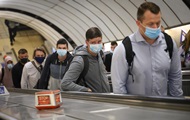If both viruses gain access to the cells at once, then the rhinovirus gains the upper hand and prevents the new coronavirus from entering.
The causative agents of acute respiratory diseases, rhinoviruses, can protect the human body from infection with coronavirus. Scientists have found that the common cold triggers an immune response that blocks the replication of SARS-CoV-2 in the human respiratory epithelium. Correspondent.net tells the details.
Viruses compete for the human body
Back in the summer of last year, scientists discovered that blood samples from healthy people who have never been exposed to coronavirus contain reactive immune cells and specific antibodies that can prevent COVID-19.
This type of immunity is spread through T-lymphocytes, white blood cells that destroy infected cells in the human body or help other parts of the immune system respond to an invading pathogen.
In the Journal of Infectious Diseases on March 23, 2021, there was published An article about the results of a study by scientists from the University of Glasgow in Scotland, which says that the virus that causes the common cold can expel the coronavirus from the body.
It is known that some viruses “compete” for a place in the human body. Thus, the flu never allows another virus to coexist with it in the same organism.
Familiar to all small RNA-containing viruses from the genus enteroviruses enter the body through the mucous membrane of the nose and eyes.
Over the past year, experts have put forward many assumptions about how the pathogen COVID-19 will fit into the world of viral interactions, but social distancing measures, lockdowns and other measures to combat the pandemic have slowed the spread of other pathogens, making them difficult to study.
Scottish researchers have infected a copy of the human respiratory mucosa with SARS-CoV-2 and rhinovirus, the most common infection in the world that causes the common cold.
It turned out that if both viruses get access to the cells at once, then the rhinovirus gains the upper hand and prevents the new coronavirus from getting inside.
Moreover, as experience has shown, this happens in any of the three scenarios: if rhinovirus is launched 24 hours earlier than SARS-CoV-2; if both viruses access cells at the same time; and if the coronavirus was given a daily head start, letting it in 24 hours earlier than the rhinovirus.
Tests have also shown that once inside the cell, the rhinovirus triggers the body’s immune response, which prevents the coronavirus from multiplying by making copies of itself.
According to scientists, after suffering a cold, a person again becomes vulnerable to COVID-19. However, on the scale of the population of a particular region or country in the autumn-winter period, rhinovirus will contain coronavirus infection.
Street masks in the red zone: what scientists think
“Mathematical modeling shows that this interaction between the two viruses is likely to be felt across the population and as the rhinovirus spreads, the number of new cases of COVID-19 will fall,” the study said.
However, as noted by the co-author of the scientific study, Pablo Murcia, vaccination will have the strongest effect in containing the coronavirus pandemic.
Among the many viruses that can cause the common cold, there are four coronaviruses (which belong to the same family as the new coronavirus that causes COVID-19) and 160 different rhinoviruses.
Rhinoviruses are very persistent and survive well on surfaces, says Elizabeth Scott, professor of microbiology and expert in home and public hygiene practice at Simmons University in Boston.
SARS-CoV-2 is an enveloped virus. It has a lipid membrane, but this layer is destroyed very quickly, and the virus dies if it is on any surface.
Studies have shown that rhinoviruses can remain on surfaces (retaining sufficient potential for infection) for more than a day. They are also more likely to survive when exposed to hand sanitizers or disinfectant wipes than SARS-CoV-2, the Washington Post notes.
Earlier, an international team of scientists led by specialists from the Technical University of Munich and the Helmholtz Center for Health and Environmental Research conducted a study that showed that the risk of infection with coronavirus increases during the flowering season.
The researchers concluded that spring bloom was a factor in the rapid spread of coronavirus in the first half of 2020 in the countries of the Northern Hemisphere. About this in detail in the material. Why does the risk of contracting COVID-19 increase in the spring?.
News from Correspondent.net in Telegram. Subscribe to our channel https://t.me/korrespondentnet
– .


